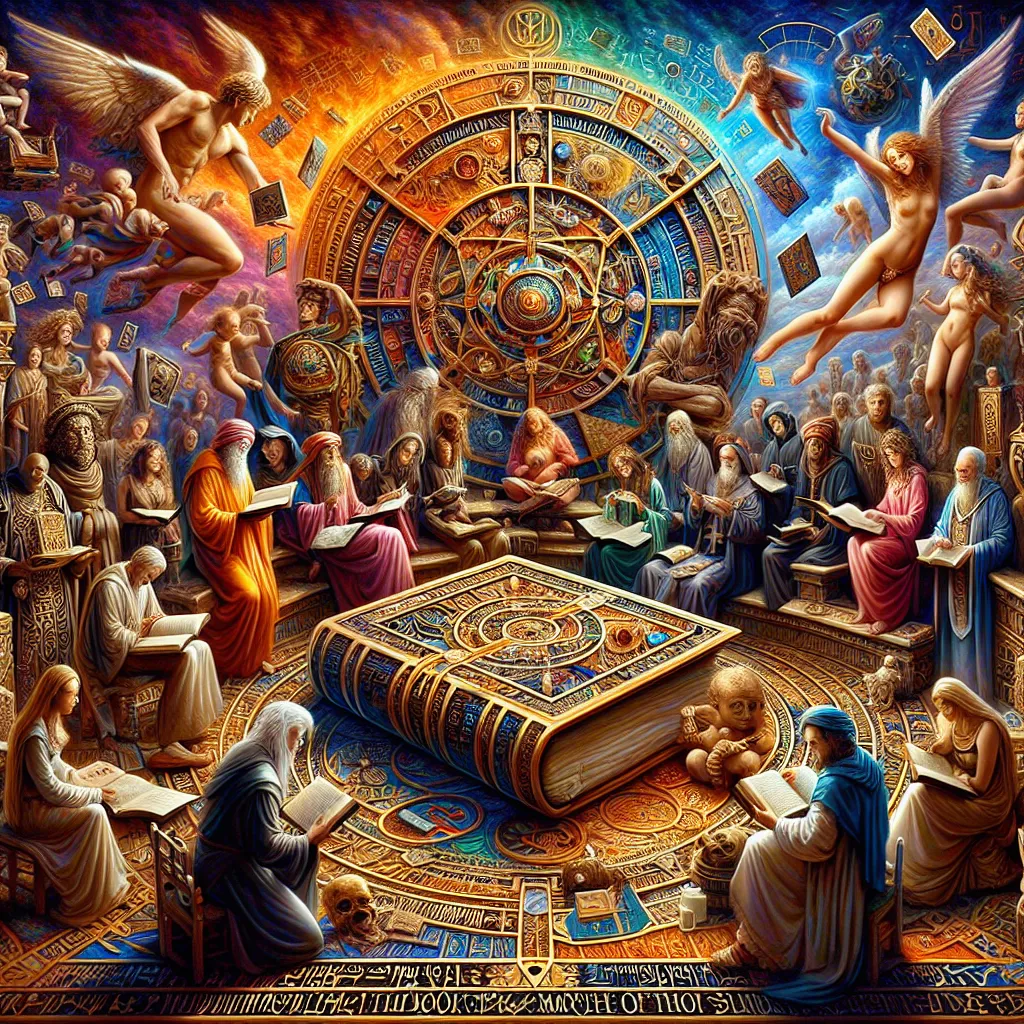
- Published on
- Authors

- Name
- You
The Book of Thoth: The Origins and Influence of Tarot
The Tarot has long been a tool of divination and spiritual insight, but few decks have garnered the esoteric reverence of the Book of Thoth Tarot. This article delves into the mystical origins of Tarot, its connections to the ancient Egyptian deity Thoth, and the impact of Aleister Crowley’s Book of Thoth Tarot deck on modern occult practices.
The Mythological Thoth: Scribe of the Gods
Thoth, known as Djehuti in Egyptian mythology, is often depicted as an ibis-headed god or sometimes as a baboon. Recognized as the deity of wisdom, writing, science, and magick, Thoth was believed to have penned the pivotal texts of ancient Egyptian lore, including the Emerald Tablets and various sacred scrolls. His association with writing and record-keeping made him a natural figure to connect with the Tarot, a system of symbolic written language.
Early History of Tarot
The origins of Tarot cards are shrouded in mystery, with historical evidence suggesting its roots in 15th-century Europe. Initially used for playing games, the Tarot evolved into a divinatory tool by the 18th century. Each card, with its intricate symbolism and imagery, functions as a key to unlock deeper intuitive understanding and esoteric knowledge.
Aleister Crowley and the Book of Thoth Tarot
Aleister Crowley, the renowned and controversial occultist, described his creation of the Book of Thoth Tarot as a magickal act of synthesis. Collaborating with artist Lady Frieda Harris, Crowley infused the deck with complex symbolism drawn from various mystical traditions, including Kabbalah, Alchemy, and Hermeticism.
Key Features of the Book of Thoth Tarot
| Card Aspect | Description |
|---|---|
| Symbolism | Incorporates elements from Western esoteric traditions such as Kabbalistic Tree of Life, alchemical symbols, and astrological signs. |
| Artistic Design | Lady Harris's artwork adds rich, intricate details, making each card a visual feast for contemplation. |
| Structure | Follows the traditional 78-card format but Crowley’s interpretations can vary significantly from the Rider-Waite deck, especially in the Minor Arcana. |
| Thoth’s Influence | Each card is seen as a reflection of Thoth’s teachings—representing deeper cosmic truths and the mysteries of the universe. |
Example: The Magus
In the Book of Thoth Tarot, The Magus (Major Arcana I) symbolizes the will and the act of creation. Crowleys Magus is a figure of immense power, able to manipulate the universe through the alignment of mind, body, and soul. His tools on the table are symbols of the elements, representing mastery over the material world—akin to Thoth’s omniscient command over wisdom and magick.
Esoteric Significance
Crowley intended the Book of Thoth Tarot to serve as more than just a divination tool; it is an initiatory gateway into the greater mysteries of the universe. Each card is a microcosm—within which lies the potential for profound spiritual awakening and personal transformation.
The Tarot as a Hermetic Tool
Hermetic Principles: The Tarot, particularly the Book of Thoth, aligns closely with Hermetic principles like Mentalism, Correspondence, and Vibration. By meditating on a card, one can gain insight into these principles and apply them in one’s spiritual practice.
| Principle | Tarot Connection |
|---|---|
| Mentalism | The Magus - The universe is mental, shaped by will. |
| Correspondence | The High Priestess - As above, so below; the bridging of spiritual and earthly realms. |
| Vibration | The Wheel of Fortune - Everything is in constant motion; cycles of change. |
Modern Influence and Practices
Today, the Book of Thoth Tarot is not only studied for its artistic and symbolic intricacies but also used in various modern magickal practices and psychological explorations. Its influence extends into self-reflection, shadow work, and the broader study of esoteric systems.
Meditative Practices:
- Contemplative Draws: Select a card (or cards) and meditate on its imagery and symbolism, reflecting on how its message applies to your current life circumstances.
- Pathworking: Journey through the Arcana by visualizing entering the card scenes and interacting with their characters and landscapes.
- Magickal Rituals: Utilize specific cards as focal points in ritual work to invoke the energies and archetypes they represent.
Conclusion
The Book of Thoth Tarot continues to be a wellspring of esoteric wisdom, blending the ancient knowledge of Thoth with Crowleys modern magickal theories. By exploring its rich symbolisms and versatile applications, practitioners today can tap into deeper layers of spiritual understanding and transformative power.
Dive into the Book of Thoth Tarot and let its ancient wisdom illuminate your path to higher consciousness and magickal mastery.
